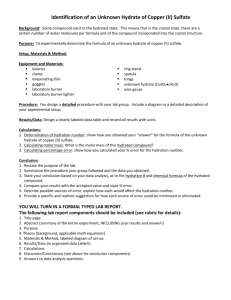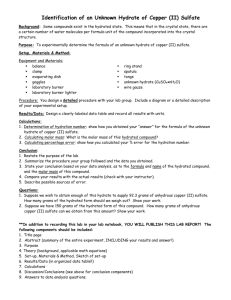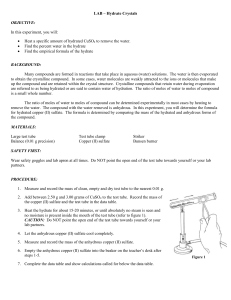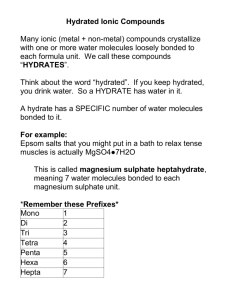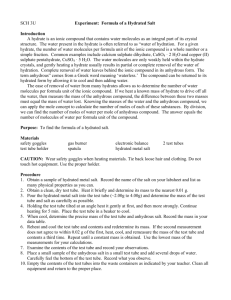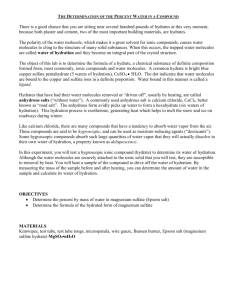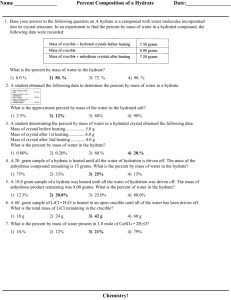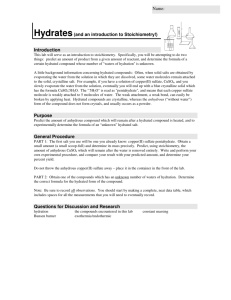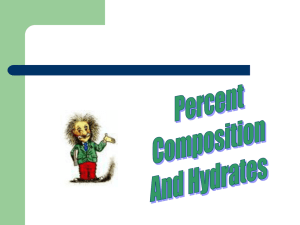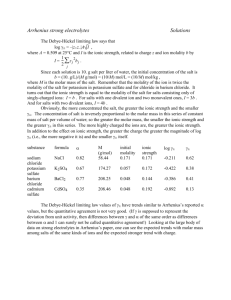Water of Hydration Lab Report - Chemistry Experiment
advertisement
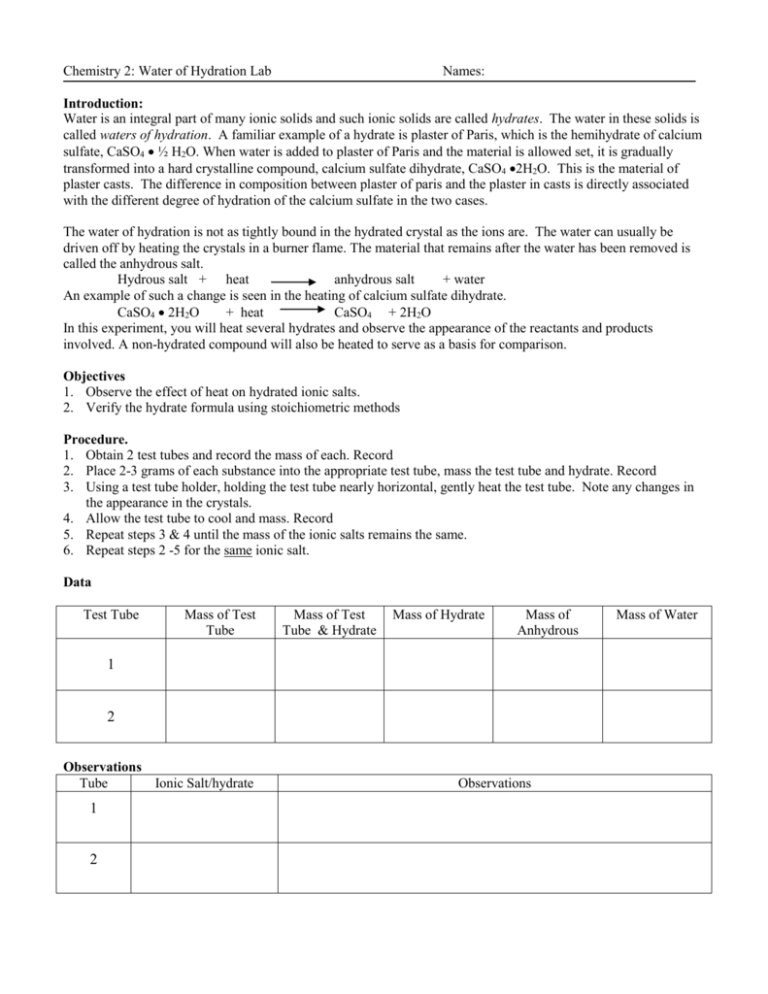
Chemistry 2: Water of Hydration Lab Names: Introduction: Water is an integral part of many ionic solids and such ionic solids are called hydrates. The water in these solids is called waters of hydration. A familiar example of a hydrate is plaster of Paris, which is the hemihydrate of calcium sulfate, CaSO4 ½ H2O. When water is added to plaster of Paris and the material is allowed set, it is gradually transformed into a hard crystalline compound, calcium sulfate dihydrate, CaSO4 2H2O. This is the material of plaster casts. The difference in composition between plaster of paris and the plaster in casts is directly associated with the different degree of hydration of the calcium sulfate in the two cases. The water of hydration is not as tightly bound in the hydrated crystal as the ions are. The water can usually be driven off by heating the crystals in a burner flame. The material that remains after the water has been removed is called the anhydrous salt. Hydrous salt + heat anhydrous salt + water An example of such a change is seen in the heating of calcium sulfate dihydrate. CaSO4 2H2O + heat CaSO4 + 2H2O In this experiment, you will heat several hydrates and observe the appearance of the reactants and products involved. A non-hydrated compound will also be heated to serve as a basis for comparison. Objectives 1. Observe the effect of heat on hydrated ionic salts. 2. Verify the hydrate formula using stoichiometric methods Procedure. 1. Obtain 2 test tubes and record the mass of each. Record 2. Place 2-3 grams of each substance into the appropriate test tube, mass the test tube and hydrate. Record 3. Using a test tube holder, holding the test tube nearly horizontal, gently heat the test tube. Note any changes in the appearance in the crystals. 4. Allow the test tube to cool and mass. Record 5. Repeat steps 3 & 4 until the mass of the ionic salts remains the same. 6. Repeat steps 2 -5 for the same ionic salt. Data Test Tube Mass of Test Tube Mass of Test Tube & Hydrate Mass of Hydrate Mass of Anhydrous 1 2 Observations Tube Ionic Salt/hydrate 1 2 Observations Mass of Water Data Analysis 1. Calculate the mean (average) for the following sets of data using your three trials Mass of Hydrate Mass of Anhydrous Mass of Water Mean 2. 3. Was your ionic salt a hydrate? What evidence do you have to support your answer? Calculate formulas. For your compound. a. Using the average mass of the anhydrous salt, find the number of moles b. Using the average mass of water, find the number of moles c. Divide the moles of water by the moles of the anhydrous salt. This is the molar ratio of anhydrous to water. d. Write the calculated formulas for each. Results and Conclusion 1. Write a balanced chemical equation for the change that took place when the ionic salt was heated. See the Introduction to this experiment for an example of this type of equation. 2. Explain why you conducted two trials instead of only once. 3. Either from chemistry resources or your teacher, obtain the correct hydrated formula for your ionic salt. If your calculated formula deviated from correct formula, explain possible causes for this. 4. Share your results with the class, identifying various hydrated salts used in lab. Record the course results here.

